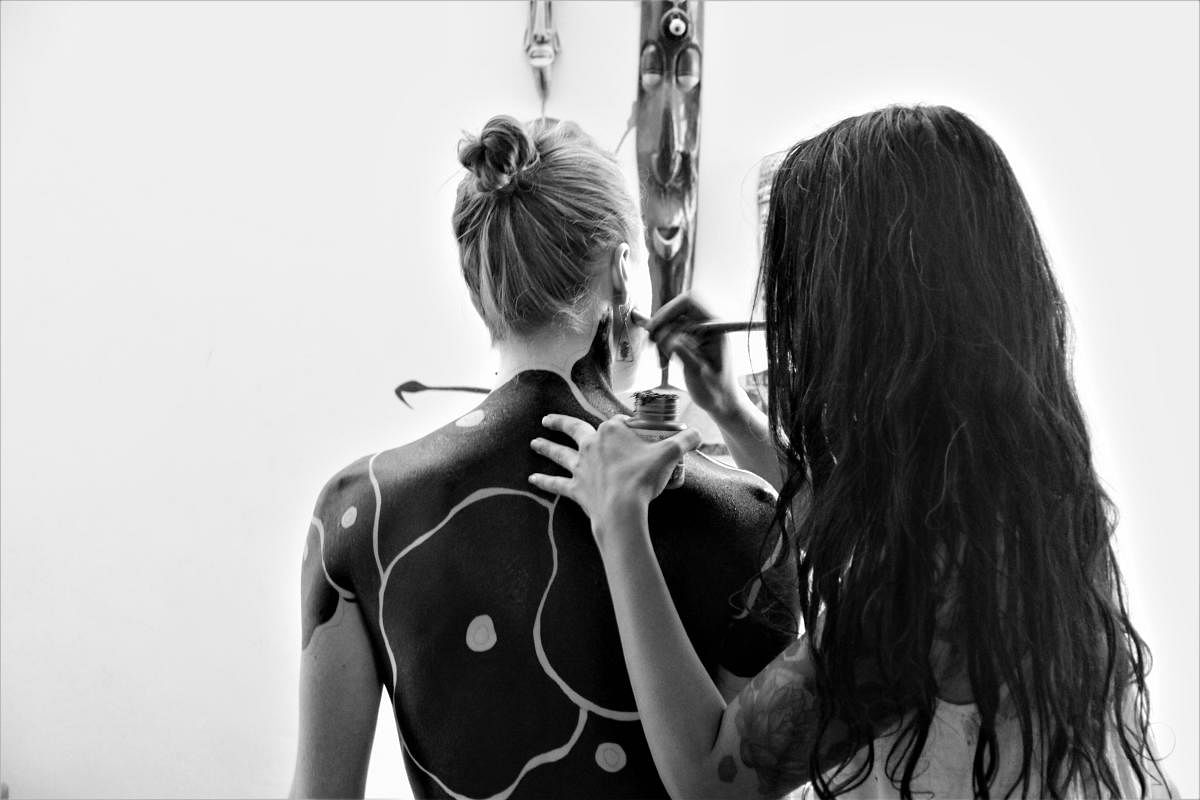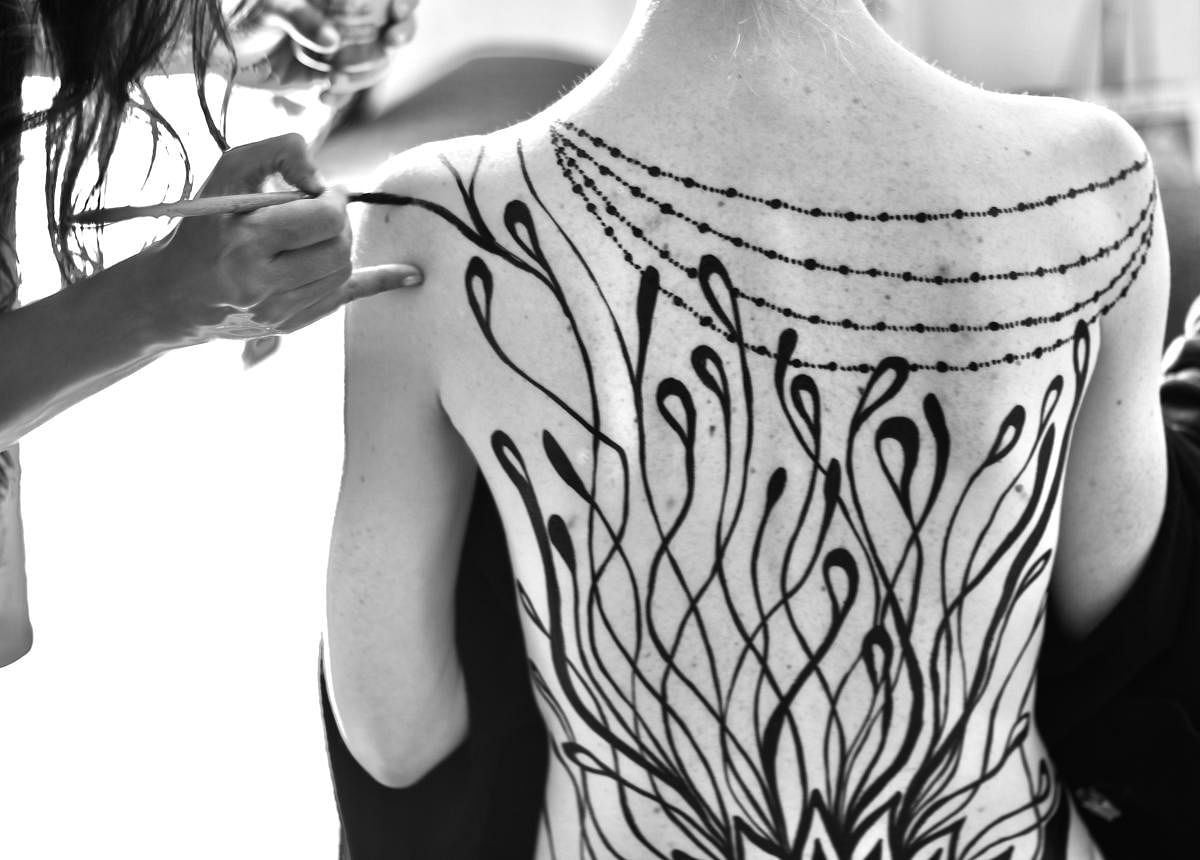

We are sometimes limited by the idea that intimacy can only be experienced sexually and that restricts the language of intimacy. An over-indulgence of body and space is all about sexual morphology. Is there another narrative to break the antecedent of the intimate space of our bodies? It is contingent, as I learn through Nidhi Mariam Jacob, a Bengaluru-based artist.
Nidhi, with the severe transformation of her life and career, began to explore something different from painting on canvas, walls and paper. “What if I look at my canvas differently? A human body, as it is almost like a living-breathing canvas...” was a thought that led to the body painting of many women and their powerful stories and voices. When Nidhi and her subjects held space together, the process was associated with tears, laughter, sharing, and silence. As Nidhi began painting the breathing skin, it surrendered to a moment — a moment of silence.
“Some start feeling nervous, and I can sense their breathing patterns and their skin pores opening, the gamut of emotions flowing and we were travelling and processing those emotions,” says Nidhi as she narrates the process of body painting.
I believe we are conditioned to the narrative of our bodies. To allow ourselves to share a space with another person, especially when it isn’t sexual at all, is petrifying.
Nidhi finds it intimidating and challenging to force herself and immerse herself into the process of creating a breathing canvas. Her sexual fluidity was questioned and stereotyped. But for her, it was women reclaiming and exploring the creative narration of their body and shared space, and using their bodies to tell stories. Shedding inhibitions that come from years of conditioning was a big part of this process for the artist and her subjects.
Throughout this journey, Nidhi had a transition in her practice as a painter. As if she was a channel of every subject of hers, a channel for something more than the art itself. The transcendence of individual practice as a painter to the collective consciousness of stories, voices, breath, and silence of each subject. When she painted a man for the first time, he said: “Now I can see how women in your project feel. I took my T-shirt off so freely. It is different for women as they have so many more layers to consider.”
Body painting is a process of acceptance of an individual’s body, experiencing the impermanence, and accepting the fragility of the piece of work. “We have forgotten how to share space with other people in silence and I experience that silence,” says Nidhi. Our bodies carry so many memories and stories. The process leads to exploration and criticism of traditional mind-body dualism. The venerable and vulnerable associations of women with physicality and stories that they carry with them find an alternative narrative. The aesthetic and the philosophical modes of exploration of the body and silent space can be viewed as complementary elements of self-alliances.
(The author is a performer, poet & feminist activist who has left a mark with her art, poetry, LGBTQIA+ talks, and feminist ideologies. This column will share untold stories of inclusivity & diversity.)